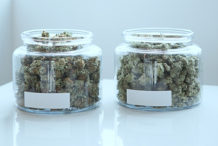If you live in a state which has legalized both medical and recreational marijuana, you may wonder about the differences between them. Especially if you suffer from a condition that medical marijuana is commonly prescribed to treat, you may wonder whether to get a medical marijuana card and receive prescribed medical marijuana, or to just go to the local dispensary and get recreational pot.
It’s a great question. There are some important differences between medical and recreational marijuana.
First, let’s define our terms.
What is medical marijuana?
Medical marijuana can refer to the whole, unprocessed plant, or extractions of the relevant chemicals that give marijuana its properties. Although marijuana has over 100 different chemicals called cannabinoids, each with a different effect on the human body, the two major chemical components that are used in medical marijuana are THC (tetrahydrocannabinol), and CBD (cannabidiol). THC is the psychoactive compound that gives marijuana its high. CBD does not produce any psychoactive effects. Medical marijuana typically has a higher proportion of CBD and a lower proportion of THC, so it produces less of a high or no high at all.
What kinds of conditions can medical marijuana treat?
Although marijuana’s status as a Schedule 1 drug has made research and testing extremely difficult, marijuana is often used to treat a variety of conditions with positive, sometimes extremely positive, results.
- Appetite loss
- Alzheimer’s disease
- Parkinson’s disease
- Crohn’s disease
- Cancer
- Eating disorders
- Glaucoma
- Muscle spasms
- Multiple sclerosis
- Nausea
- Chronic pain, vomiting and nausea resulting from chemotherapy
- Osteoarthritis
- Epilepsy
- Restless Leg Syndrome
- Insomnia
- Anxiety, depression and PSTD
Medical marijuana versus recreational marijuana
Medical Marijuana
Medical marijuana is taken with the supervision and guidance of a medical professional.
Medical marijuana strains are developed with attention to therapeutic potency, not for the high. Typically medical marijuana has a higher CBD content and lower THC content than recreational marijuana. CBD is the compound that has proven to be beneficial for a variety of conditions.
You must have a qualifying condition to get a medical marijuana recommendation from a medical professional. You must have a certification card, and this must be renewed regularly.
You must be over 18 years of age to buy medical marijuana for yourself. There are special circumstances where this age limit is waived, as for children suffering from epilepsy, whose parents may get permission to use medical marijuana or medical marijuana extracts for treatment.
Medical marijuana is subject to greater regulation and testing for safety and efficacy. Because the medical market has been around for much longer than the recreational, medical marijuana cultivators have had time to produce a high-quality and consistent product. It is grown in a controlled environment. THC and CBD percentages will be noted for each product.
Medical marijuana is less expensive than recreational marijuana since it is not subject to the same taxes.
Medical marijuana is legal in more states than recreational marijuana.
Recreational Marijuana
If recreational marijuana is legal in your state, anyone over the age of 21 can buy it at a dispensary.
Recreational marijuana usually has a higher THC content, and strains are typically developed with attention to the quality of the psychoactive effects.
There is no supervision or guidance with recreational marijuana.
Recreational marijuana is, for now, a poorly-regulated and sparsely-supervised affair. Product purity and safety oversight — for example, pesticide testing — is not yet consistently and reliably done on recreational pot, although laws require it. States have been slow to grant certification to laboratories to do such testing. Massachusetts is now moving toward having recreational pot tested at the same labs as medical marijuana.
Recreational marijuana brings in considerably more tax revenue to the state than medical marijuana. Recreational dispensaries often charge more than medical dispensaries.
Recreational marijuana is only legal in ten states.
Medical marijuana is specifically cultivated for treating painful or disabling conditions that keep you from enjoying life
Medical marijuana’s purpose is to let you live your life. Because it has higher proportions of CBD than recreational pot, it won’t disrupt your normal routine. While taking it, you can still feel sharp and clear, without feeling high. CBD also doesn’t cause anxiety, as THC sometimes does.
If you’re suffering from a condition that medical marijuana has shown to be effective in treating, and if you live in a state where medical marijuana is legal, speak to your physician and see if you qualify. Your condition doesn’t have to make you miserable. Medical marijuana may help you get back to living and enjoying your life.
